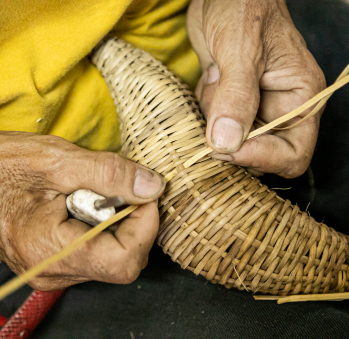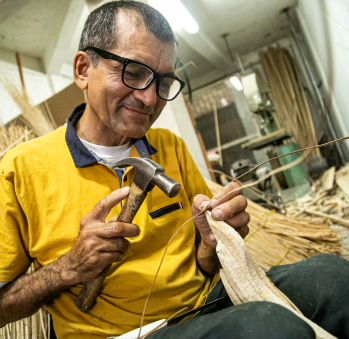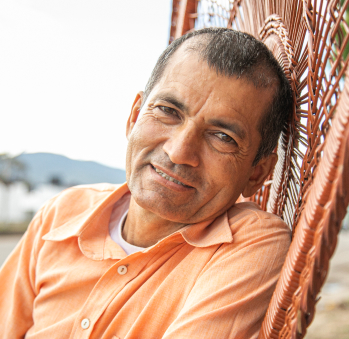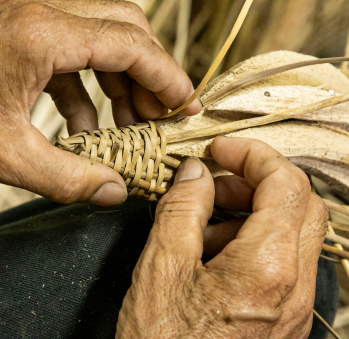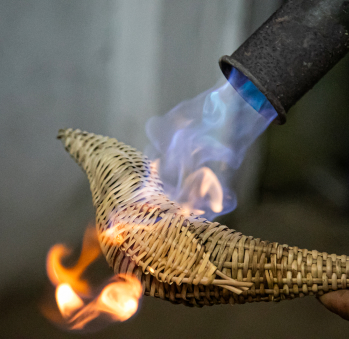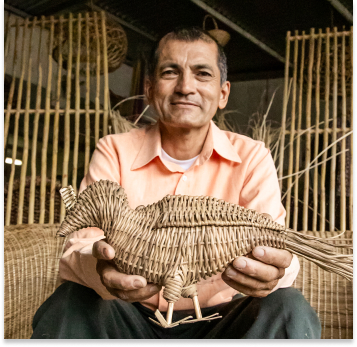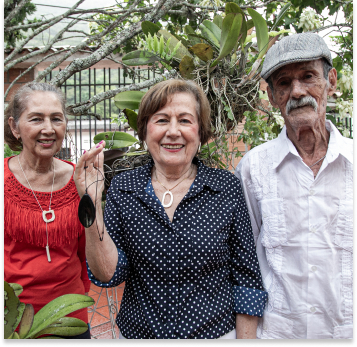Reinaldo Soto
Workshop: Artesanías Reyso
Craft: Cestería
Trail: Norte de Santander Route
Location: Villa del Rosario, Norte de Santander
Talking to Reinaldo Soto, it becomes clear that the concept of a frontier is porous. All it takes for someone to reach the neighboring country, in this case, Venezuela, is to cross a bridge or a river. Therefore, when recounting his own life experience, it becomes evident that his craft has been influenced by factors such as currency fluctuation and the rise and fall of the Venezuelan currency. During the oil boom, he reached his peak, followed by the economic crisis that hit Venezuela and is still ongoing, which affected those whose work was to sell and buy goods on the border. Reinaldo was one of them.
Reinaldo recounts that although he was born in the province of García Rovira, Santander, where his parents worked in tobacco, corn, yucca, and plantain crops, as well as breeding animals, he spent his teenage years in his mother’s family hometown, Villa del Rosario, Norte de Santander. It was there where he became familiar with the crossing of the Táchira River and the daily hustle. Later on, the family moved to Cúcuta. He still remembers how, upon their arrival, he prayed for a job that didn’t involve long hours of intense work under the sun. Looking back, and proud of having been heard, Reinaldo remembers how, after praying, “”God, Father, give me a job in the shadows because the ones I’ve had are too hard,”” his uncle phoned him to offer him a collaborative job.
Uncle Serafín owned a bamboo and wicker furniture factory. That would be his school, the place where he would learn everything he knows. At the beginning, he was in charge of sweeping the shop’s floors, but soon enough, he became interested in the crafts practiced at the factory. Thanks to his cousins, who entrusted him to find solutions for the customers’ orders, he became a skillful weaver. His self-guided training began with the clearing of bamboo’s knots and the weaving of small baskets, for which he didn’t use any molds but an empty mayonnaise jar. Uncle Serafín himself was surprised with his nephew’s intuitive understanding of the craft, and customers, aware of his attention to detail and delicate hands, entrusted him with the repair of their vessels. Eventually, his uncle invited him to visit the raw material fields, where his knowledge continued to be nourished.
In the year 2000, once he felt prepared enough to embrace adulthood, he became independent and, alongside his brother José Ángel, planted an acre of wicker fiber. He recalls investing the money he had been saving since he was nineteen in this new project, 450,000 pesos. He took thorough care of his plants and was particularly careful with protecting them from a species of ants known as arriera in Colombia and bachaco in Venezuela. Their crops gradually became bigger and bigger, and they lived wealthy times, selling wicker furniture and raw material to the neighboring country. Reinaldo is filled with pride as he recalls those times when they even hired six workers, met their household needs, and grew their business. However, tables turned at the end of the decade with the devaluation of the Venezuelan currency. The stored raw material began to rot due to the lack of buyers, and the economic situation forced Reinaldo and José Ángel to go their separate ways because they weren’t able to keep their business afloat in the crisis. Each followed separate paths, José Ángel in basketry and Reinaldo in weaving.
In 2015, Artesanías de Colombia arrived in town with an open call for craftspeople interested in improving their production processes and innovation. At the beginning, there were 300 people. Time and work narrowed the group down to 20, and in the end, only 5 remained, including Reinaldo. A common habit among craftspeople was using templates for their crafts, so when Artesanías de Colombia came with the proposal of creating their own crafts, the idea wasn’t welcomed. But Reinaldo was brave enough to give it a try. He combined wicker weaves with leatherwork to manufacture stools, learned how to make lamps, and even crafted wicker animals such as orioles, Santander’s toche birds, bulls, goats, and donkeys.
Thus, thanks to his decorative wicker pieces, he stood out in his department and became the renowned craftsman he is today. His creations are imbued with a distinctive identity, and that’s why, in the present, so many entrepreneurs reach out to him for assistance in the interior design of their premises. Reinaldo, as resilient as he is, is steadfast and ready to face the times to come and excel in the process.
Craft
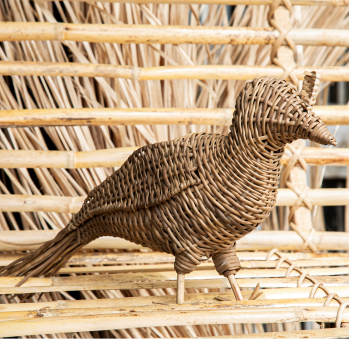



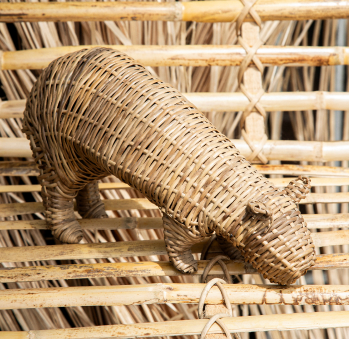
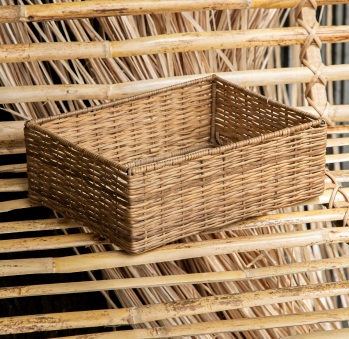
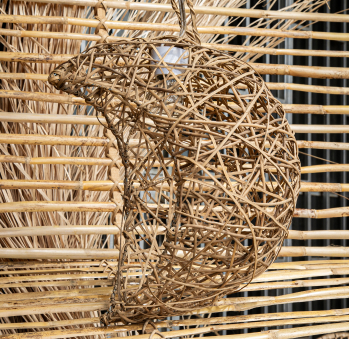







Artisans along the way
Artisans along the way
No puede copiar contenido de esta página









































